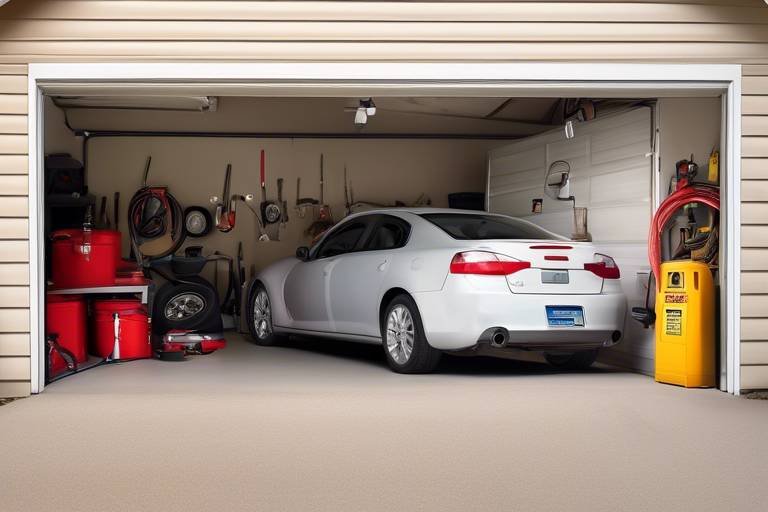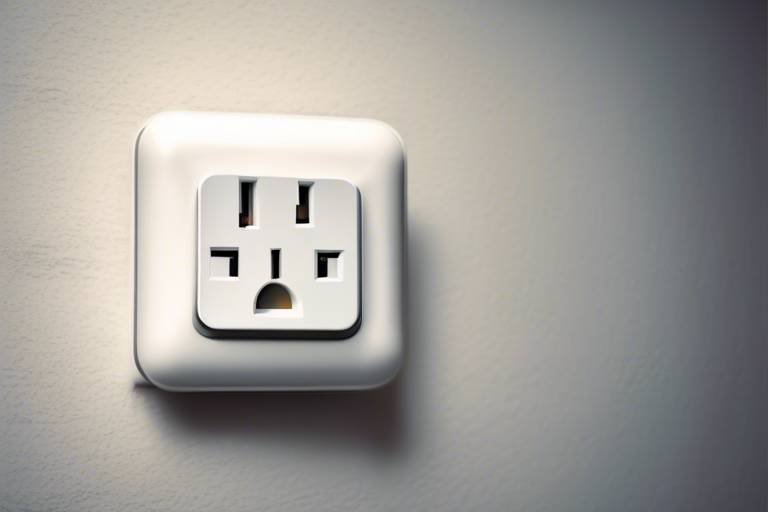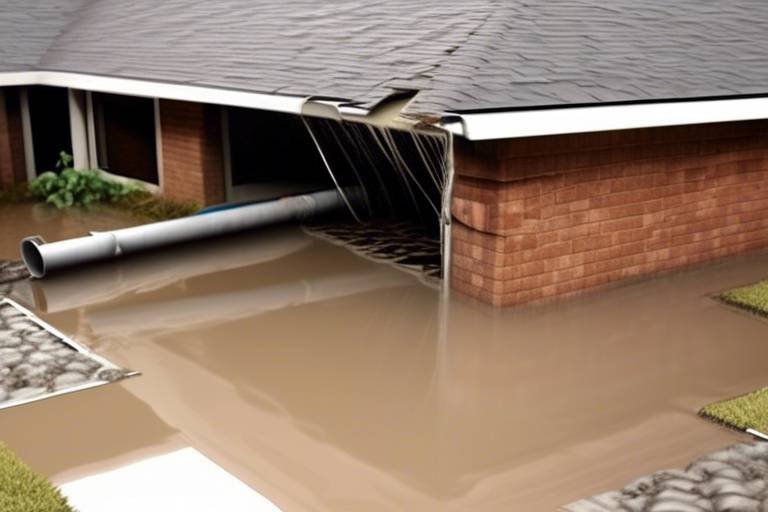How Often Should You Change Your Smoke and Carbon Monoxide Alarms
When it comes to the safety of your home, smoke and carbon monoxide alarms are your first line of defense. But just like any other safety equipment, these alarms have a lifespan and need to be replaced periodically to ensure they function correctly. So, how often should you change them? This is a question that many homeowners ponder, and rightfully so! The last thing you want is to be caught off guard by a malfunctioning alarm when it matters most.
Experts recommend that smoke alarms should be replaced every 10 years, while carbon monoxide alarms should be replaced every 5 to 7 years. Why is this timeline so crucial? Over time, the sensors in these alarms can degrade, leading to reduced sensitivity and an increased risk of failure. Just think about it: if your alarm is like a soldier on the front lines, after years of service, it might not be as sharp as it once was! You wouldn’t want a soldier who’s lost their edge, right?
But it’s not just about the time that has passed. There are other factors that can signal it’s time for a change. For instance, if you notice that your alarms are chirping or beeping unexpectedly, it could indicate a malfunction. Additionally, physical damage or discoloration of the alarm can also be a sign that it’s time to replace it. Just like a car that’s showing signs of wear and tear, your alarms need to be in top condition to protect your home and loved ones.
Furthermore, it’s essential to adhere to the manufacturer's guidelines for replacement. Each model may have specific instructions regarding its lifespan and maintenance. Ignoring these guidelines can lead to unnecessary risks. Think of it like following a recipe: if you skip a crucial step, the outcome may not be what you expected!
In addition to the manufacturer’s recommendations, it’s wise to familiarize yourself with local regulations regarding smoke and carbon monoxide alarms. Some areas have laws that dictate specific maintenance requirements. By staying compliant, you not only ensure your safety but also avoid potential fines or penalties. It’s like knowing the rules of the road; you wouldn’t want to get pulled over for a simple oversight!
In summary, keeping track of when to replace your smoke and carbon monoxide alarms is vital for maintaining a safe home environment. Regular checks, adherence to guidelines, and awareness of local regulations can help you stay ahead of potential dangers. Remember, your safety is worth the effort!
- How can I tell if my smoke alarm is still working? Regularly test your smoke alarm by pressing the test button. If it sounds, it’s working! If not, it may need replacing.
- Can I replace just the batteries in my alarm? While replacing batteries is a good practice, it doesn’t replace the entire unit. Remember to follow the replacement timelines!
- What should I do if my carbon monoxide alarm goes off? Immediately evacuate your home and call emergency services. Carbon monoxide is dangerous, and it’s better to be safe than sorry!

Understanding Smoke Alarms
Smoke alarms are essential safety devices that play a crucial role in protecting your home and loved ones from the devastating effects of fire. These small yet mighty gadgets detect smoke particles in the air, alerting you to potential danger before it becomes a life-threatening situation. Imagine being fast asleep when a fire breaks out; a smoke alarm can be the difference between life and death, waking you up in time to escape. But do you really know how these devices work and why they are so important?
Smoke alarms come in various types, each designed to detect different kinds of fires. Understanding their functions can help you choose the right ones for your home. The two primary types of smoke alarms are ionization and photoelectric alarms. Ionization smoke alarms are particularly sensitive to flaming fires, which makes them effective in detecting fast-burning fires that might occur in kitchens or living rooms. On the other hand, photoelectric smoke alarms excel at detecting smoldering fires, which are often caused by materials like upholstery or electrical wiring. Knowing these differences can guide you in selecting the best option for your specific needs.
Here’s a quick breakdown of how these alarms work:
| Type of Alarm | Best For | Detection Method |
|---|---|---|
| Ionization | Fast-flaming fires | Uses radioactive material to detect smoke |
| Photoelectric | Smoldering fires | Uses a light beam to detect smoke |
In addition to understanding the types of smoke alarms, it’s vital to recognize their placement in your home. Ideally, you should install smoke alarms on every level of your home, including the basement and outside each sleeping area. This ensures that everyone in the house can hear the alarm, no matter where they are. Just think of it as a safety net that catches you when you least expect it—an invisible guardian watching over your family.
Furthermore, regular maintenance is key to ensuring your smoke alarms function correctly. This includes testing them monthly and replacing the batteries at least once a year. You wouldn’t drive a car without checking the oil, right? The same principle applies here. Don’t wait for the alarm to go off before you realize it’s not working!
In summary, understanding smoke alarms is not just about knowing they exist; it’s about knowing how to use them effectively to safeguard your home. They are your first line of defense against fire hazards, and being informed can make all the difference. So, take the time to educate yourself about these devices, and ensure your home is equipped with the right alarms to keep your family safe.
- How often should I test my smoke alarms? It is recommended to test your smoke alarms at least once a month to ensure they are functioning properly.
- When should I replace my smoke alarms? Smoke alarms should be replaced every 10 years, or sooner if they fail to respond during testing.
- Can I use a smoke alarm in the kitchen? While you can place a smoke alarm in the kitchen, it is advisable to use a photoelectric alarm to minimize false alarms from cooking.
- What should I do if my smoke alarm goes off? If your smoke alarm sounds, treat it as a real emergency. Evacuate your home immediately and call emergency services.

Understanding Carbon Monoxide Alarms
Carbon monoxide alarms are your home's silent guardians, tirelessly working to keep you and your loved ones safe from the dangers of this odorless and colorless gas. Unlike smoke, which is easy to detect, carbon monoxide (CO) is often referred to as the "silent killer" because it can accumulate in your home without any warning signs. Understanding how these alarms function is crucial for protecting your family from potential poisoning.
These alarms operate using one of two primary technologies: electrochemical sensors or metal oxide semiconductor sensors. Electrochemical sensors are the most common type found in residential alarms, as they are highly sensitive and can detect even the smallest amounts of carbon monoxide in the air. On the other hand, metal oxide semiconductor sensors work by measuring changes in electrical resistance when exposed to CO, providing a reliable alert system as well.
It’s essential to place carbon monoxide alarms in strategic locations throughout your home. The best practice is to install them near sleeping areas, as this ensures that you and your family can hear the alarm if it goes off during the night. Additionally, having alarms on every level of your home, including the basement and garage, can significantly enhance your safety. Remember, an alarm is only as good as its placement.
To ensure your carbon monoxide alarms are functioning properly, regular maintenance is key. This includes performing monthly tests by pressing the test button on the unit. If your alarm emits a series of beeps or chirps, it indicates that it is working correctly. However, if you hear a continuous alarm sound, it’s crucial to evacuate your home immediately and call for help, as this could mean dangerous levels of CO are present.
In addition to regular testing, it's also important to replace the batteries at least once a year or whenever you hear a low battery warning chirp. Moreover, just like smoke alarms, carbon monoxide alarms have a limited lifespan, typically around 5 to 7 years. After this period, the sensors may degrade, making them less effective. Always check the manufacturer’s guidelines for specific recommendations regarding replacement.
In summary, understanding carbon monoxide alarms is not just about knowing how they work but also about being proactive in ensuring their effectiveness. By placing them correctly, maintaining them regularly, and replacing them as needed, you can significantly reduce the risk of carbon monoxide poisoning in your home. Remember, your safety is worth the effort!
- How do I know if my carbon monoxide alarm is working? Regularly test your alarm by pressing the test button. If it sounds, it’s functioning properly.
- Where should I place my carbon monoxide alarms? Install them near sleeping areas and on every level of your home, including the basement.
- How often should I replace my carbon monoxide alarm? Replace your alarm every 5 to 7 years, or according to the manufacturer's instructions.
- What should I do if my carbon monoxide alarm goes off? Evacuate your home immediately and call for emergency assistance.

Types of Smoke Alarms
When it comes to safeguarding your home from fires, understanding the available is crucial. Smoke alarms come in various designs, each tailored to detect different kinds of fires. The two most common types are ionization smoke alarms and photoelectric smoke alarms. Knowing the differences between them can help you choose the right one for your unique living environment.
Ionization smoke alarms are designed to be highly sensitive to flaming fires. They work by utilizing a small amount of radioactive material to create an electric current between two plates. When smoke enters the chamber, it disrupts this current, triggering the alarm. This type of alarm is particularly effective in detecting fast-burning fires, such as those caused by flammable liquids or paper. However, they may be less effective at sensing smoldering fires, which can produce less smoke initially. Therefore, they are best suited for areas like kitchens or living rooms where the risk of flaming fires is higher.
On the other hand, photoelectric smoke alarms use a light source and a sensor to detect smoke. In this case, when smoke enters the sensing chamber, it scatters the light beam, causing the alarm to go off. These alarms are more effective at detecting smoldering fires, which tend to produce more smoke before bursting into flames. This makes them ideal for bedrooms or hallways, where fires might start unnoticed.
While both types of alarms have their advantages, it’s essential to consider installing a combination of both in your home. This way, you can ensure maximum protection against all types of fire hazards. To summarize, here’s a quick comparison of the two types:
| Type of Alarm | Best For | Detection Method |
|---|---|---|
| Ionization Smoke Alarm | Fast-burning fires (e.g., paper, flammable liquids) | Electric current disruption |
| Photoelectric Smoke Alarm | Smoldering fires (e.g., upholstery, electrical fires) | Light scattering |
Ultimately, having the right smoke alarms in place can mean the difference between life and death in the event of a fire. As you evaluate your home’s safety measures, consider not only the type of alarms but also their placement and maintenance. Regularly testing your alarms and replacing batteries as needed is just as important as choosing the right type. Remember, safety isn't just a choice; it's a lifestyle!
- How often should I test my smoke alarms? It's recommended to test your smoke alarms at least once a month to ensure they are functioning properly.
- What should I do if my smoke alarm goes off? If your smoke alarm goes off, evacuate the area immediately and call emergency services. Do not assume it is a false alarm.
- Can I use the same alarm for smoke and carbon monoxide? While some alarms combine both functions, it's generally advisable to have separate alarms for smoke and carbon monoxide for optimal safety.

Ionization Smoke Alarms
Ionization smoke alarms are your first line of defense against fast-flaming fires, which can erupt in the blink of an eye. These alarms work by utilizing a small amount of radioactive material between two electrically charged plates. When smoke enters the chamber, it disrupts the flow of ions, triggering the alarm. This technology makes ionization alarms particularly sensitive to flames, making them ideal for areas where a fire might start suddenly, such as kitchens or living rooms.
One of the standout features of ionization smoke alarms is their speed. They can detect smoke particles produced by a flaming fire much quicker than other types of alarms. However, it's essential to understand that they may not be as effective in detecting smoldering fires, which produce larger smoke particles. Therefore, while they are a critical component of fire safety, they should ideally be used in conjunction with other types of alarms, such as photoelectric models, to provide comprehensive coverage.
When considering where to install ionization smoke alarms, think about high-risk areas in your home. Here are a few recommended locations:
- Near sleeping areas, to ensure you wake up in case of a fire.
- In hallways leading to bedrooms, providing additional alerts.
- On every level of your home, especially near the kitchen, where fires are more likely to start.
It's also crucial to maintain these alarms properly. Regular testing—at least once a month—can help ensure they are functioning correctly. Remember, even the best technology needs a little TLC! If your ionization smoke alarm starts beeping or chirping, it could be a sign that the battery needs replacing or that the unit itself is malfunctioning. Always replace the entire unit if it is over ten years old, as the sensors can degrade over time, decreasing effectiveness.
In summary, ionization smoke alarms play a vital role in protecting your home from fast-flaming fires. By understanding their operation, placement, and maintenance, you can significantly enhance your family's safety and ensure your home is well-prepared to handle any fire emergencies.
Q: How often should I test my ionization smoke alarm?
A: It's recommended to test your ionization smoke alarm at least once a month to ensure it's functioning correctly.
Q: Can I use just ionization smoke alarms in my home?
A: While they are effective for flaming fires, it’s best to use them alongside photoelectric alarms for comprehensive fire detection.
Q: How long do ionization smoke alarms last?
A: Ionization smoke alarms typically have a lifespan of about 10 years. After that, they should be replaced to ensure optimal performance.
Q: What should I do if my alarm starts beeping?
A: Beeping usually indicates that the battery needs replacing or that the alarm is malfunctioning. Check the user manual for specific troubleshooting steps.
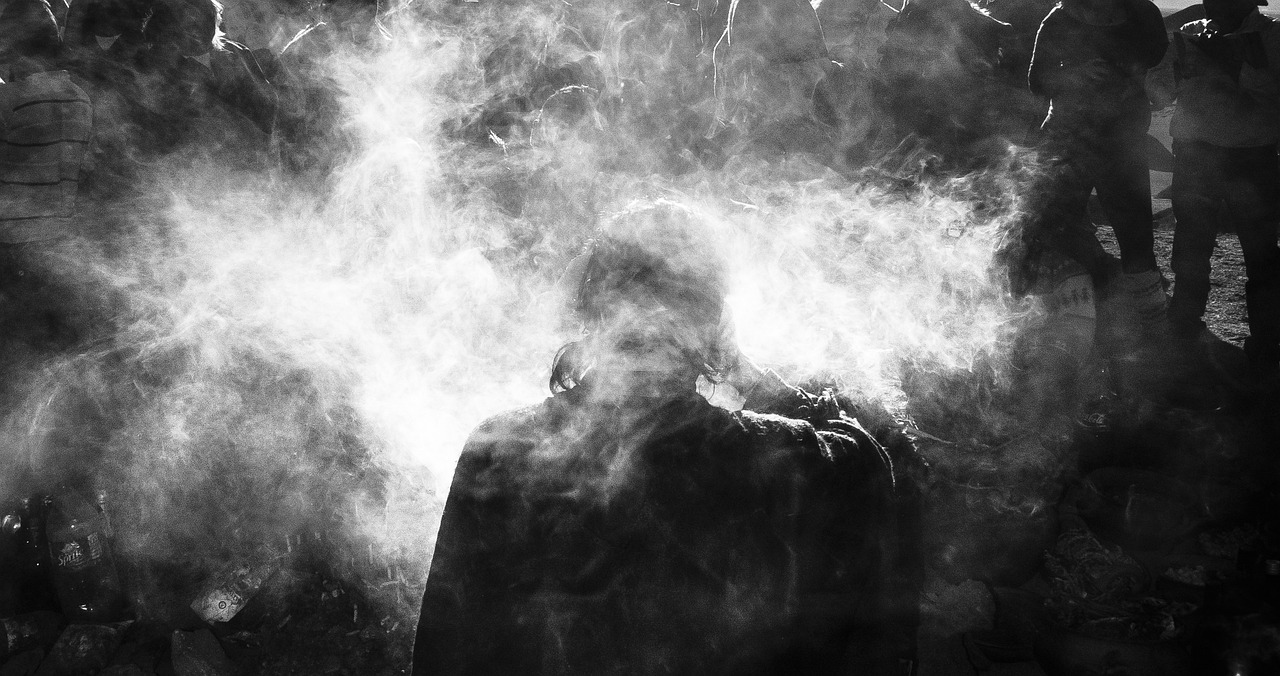
Photoelectric Smoke Alarms
When it comes to safeguarding your home from fire hazards, are a game changer. Unlike their ionization counterparts, which are primarily designed to detect fast-flaming fires, photoelectric alarms excel at identifying smoldering fires—those sneaky blazes that produce a lot of smoke but burn slowly. These types of fires often occur in places like kitchens or living rooms, where materials like upholstery and paper might ignite and smolder before bursting into flames. The unique technology behind photoelectric alarms allows them to use a light source and a light sensor to detect smoke particles, making them incredibly effective in a variety of situations.
One of the most significant advantages of photoelectric smoke alarms is their reduced likelihood of false alarms. If you’ve ever been jolted awake in the middle of the night by a shrill alarm due to burnt toast or a steamy shower, you’ll appreciate this feature. Photoelectric alarms are less prone to these nuisances because they are designed to distinguish between smoke from actual fires and normal household activities. This makes them ideal for placement in bedrooms and hallways, where a false alarm can be particularly disruptive.
Additionally, photoelectric smoke alarms often come with features that enhance their usability. Many models are equipped with a hush button, allowing you to silence the alarm temporarily without removing the battery. This can be especially handy during cooking or when performing tasks that might create a bit of smoke. Moreover, some advanced models even offer smart technology, enabling them to connect to your smartphone. Imagine receiving a notification while you’re at work, alerting you that your smoke alarm has detected something unusual at home. This is not just convenience; it’s peace of mind.
When selecting a photoelectric smoke alarm, consider the following factors:
- Battery Type: Choose between hardwired models that connect to your home’s electrical system and battery-operated ones for easy installation.
- Interconnectivity: Some alarms can be interconnected, meaning if one alarm goes off, they all do. This feature is crucial for larger homes.
- Smart Features: Look for models with app connectivity for real-time alerts and monitoring.
In summary, if you’re in the market for a smoke alarm, don’t overlook the advantages of photoelectric models. They not only provide reliable protection against the hidden dangers of smoldering fires but also offer features that make them user-friendly and efficient. Investing in a quality photoelectric smoke alarm can significantly enhance your home’s safety, making it a wise choice for any homeowner.
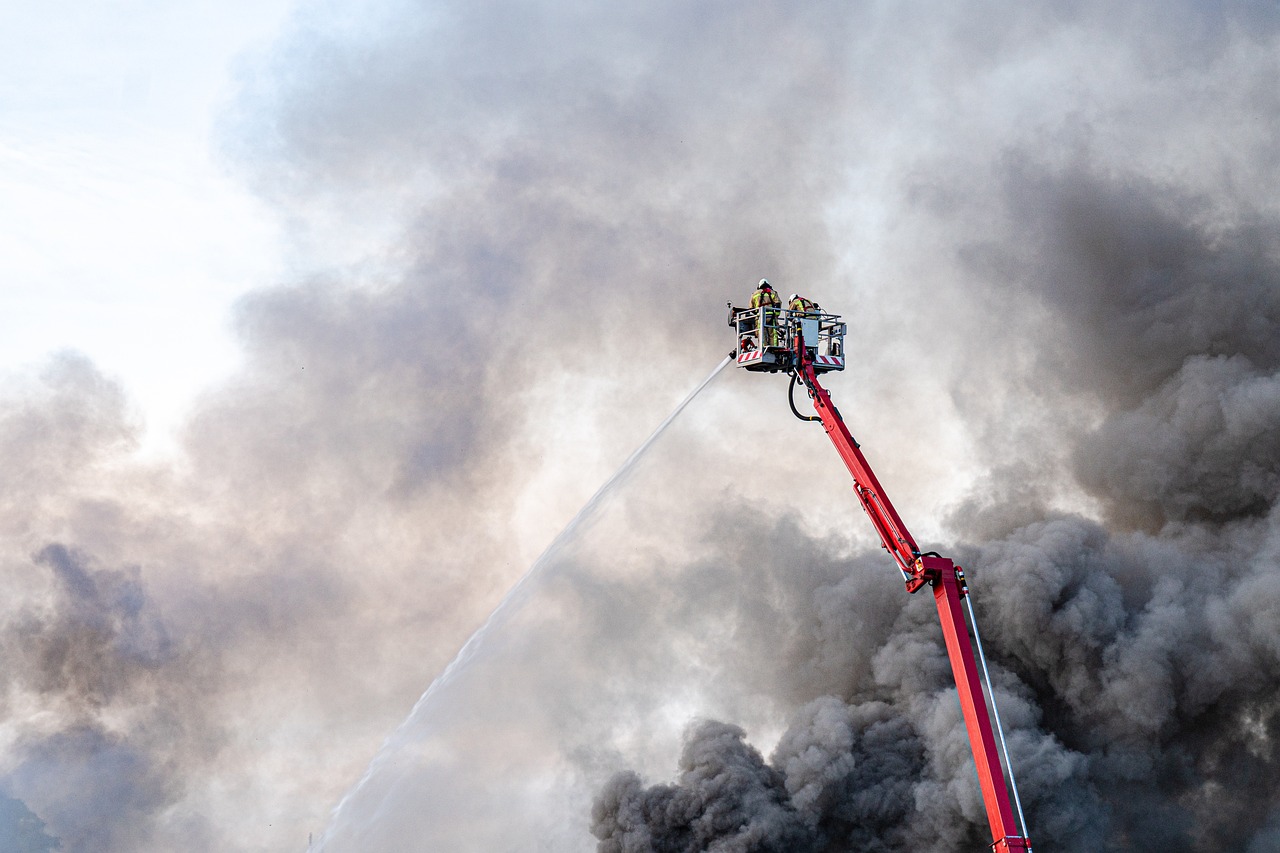
Signs Your Alarms Need Replacement
Recognizing the signs that your smoke and carbon monoxide alarms need replacement is crucial for maintaining safety in your home. These devices are your first line of defense against fire and toxic gas, so you can't afford to ignore their condition. Just like you wouldn't drive a car with a warning light flashing on the dashboard, you shouldn't overlook the indicators that your alarms are not functioning properly. Here are some key signs to watch for:
First and foremost, consider the age of your alarms. Most smoke alarms have a lifespan of about 10 years, while carbon monoxide alarms typically last between 5 to 7 years. If your alarms are approaching or have surpassed these timeframes, it's time to replace them. Think of it like a milk carton in your fridge; once it's past the expiration date, you wouldn't risk consuming it, right?
Another critical sign is the malfunctioning alerts. If you notice that your alarms are beeping inconsistently or failing to sound when they should, it's a clear indication that something is wrong. This could mean that the batteries need replacing, or worse, that the unit itself is malfunctioning. In such cases, it's better to be safe than sorry. A faulty alarm is just as dangerous as having no alarm at all!
Physical damage to the alarms is also a red flag. If you see cracks, dents, or any signs of wear and tear, do not hesitate to replace them. These damages can compromise the alarm’s ability to function correctly. Just like a smartphone with a cracked screen may not respond properly, a damaged alarm may fail to alert you in an emergency.
Furthermore, if you experience frequent false alarms, it may be time to consider replacing your smoke alarms. While occasional false alarms can happen, especially if you’re cooking, consistent false alarms can indicate that the unit is no longer functioning properly. It’s like a crying wolf scenario; if it keeps happening, you might not take the next alarm seriously.
Lastly, it’s wise to pay attention to the indicator lights on your alarms. Many modern smoke and carbon monoxide detectors come equipped with LED lights that signal their operational status. If these lights are blinking in unusual patterns or are completely off, it's a sign that the alarm needs to be replaced. Always remember, these devices are designed to keep you safe, so don’t ignore any warning signs!
In summary, keeping an eye out for age, malfunctioning alerts, physical damage, frequent false alarms, and indicator lights can help you maintain a safe environment in your home. If you notice any of these signs, it’s time to take action and replace your alarms. Your family’s safety is worth it!
- How often should I test my smoke and carbon monoxide alarms? It's recommended to test them at least once a month to ensure they are functioning properly.
- Can I replace just the batteries in my alarms? While you can replace the batteries, if your alarms are older than the recommended lifespan, it’s best to replace the entire unit.
- What should I do if my alarm goes off? Evacuate your home immediately and call emergency services. Do not re-enter until it’s deemed safe.
- Where should I install smoke and carbon monoxide alarms? Install them on every level of your home, inside each bedroom, and outside sleeping areas for optimal safety.

Recommended Replacement Frequency
When it comes to ensuring the safety of your home, understanding the for smoke and carbon monoxide alarms is crucial. Experts agree that smoke alarms should be replaced every 10 years. This timeline is based on the fact that the sensors within these devices can degrade over time, diminishing their ability to detect smoke effectively. Imagine relying on an old alarm that might not go off when you need it most—it's a risk no one should take!
On the other hand, carbon monoxide alarms have a shorter lifespan. It's recommended to replace them every 5 to 7 years. The reason for this shorter replacement cycle lies in the nature of carbon monoxide detection technology, which can wear out and become less reliable over time. Just like a car that needs regular oil changes to run smoothly, your carbon monoxide alarms require timely replacements to keep your family safe from this invisible, odorless danger.
To help you keep track of when to replace your alarms, consider marking your calendar or setting reminders on your phone. You could even create a simple replacement schedule to ensure you never miss a beat. Here’s a quick reference table for your convenience:
| Alarm Type | Recommended Replacement Frequency |
|---|---|
| Smoke Alarms | Every 10 years |
| Carbon Monoxide Alarms | Every 5 to 7 years |
While these are general guidelines, it's essential to also refer to the manufacturer’s instructions for your specific alarms. Each brand may have unique recommendations based on their technology and design. Additionally, local regulations may impose stricter requirements that you need to adhere to. By staying informed and proactive about the maintenance of your alarms, you can significantly reduce the risk of fire or carbon monoxide poisoning in your home.
In conclusion, keeping track of the replacement frequency for smoke and carbon monoxide alarms is not just a recommendation; it’s a vital part of home safety. Just as you wouldn't skip routine check-ups for your health, don’t overlook the importance of these life-saving devices. Remember, when it comes to safety, it’s better to be safe than sorry.
- How can I tell if my smoke alarm is still working? Regularly test your alarms by pressing the test button. If it beeps, it’s working; if not, it may need a battery replacement or replacement.
- What should I do if my carbon monoxide alarm goes off? Evacuate your home immediately and call emergency services. Do not re-enter until it is declared safe.
- Can I replace the batteries instead of the entire alarm? Yes, for battery-operated smoke alarms, you can replace the batteries. However, remember to replace the entire unit according to the recommended frequency.
- Are there any specific locations where I should install these alarms? Yes, smoke alarms should be installed in every bedroom, outside each sleeping area, and on every level of your home. Carbon monoxide alarms should be placed near sleeping areas and on every level as well.

Manufacturer Guidelines
When it comes to ensuring the safety of your home, adhering to for smoke and carbon monoxide alarms is essential. These guidelines are designed not only to enhance the effectiveness of the alarms but also to prolong their lifespan. Each manufacturer provides specific instructions that should be followed closely to guarantee optimal performance.
Typically, you'll find that most manufacturers recommend checking your alarms at least once a month. This simple task can save lives. A quick test of the alarm's functionality can be done by pressing the test button, ensuring that the device is operational. If you hear a chirping sound, it may indicate that the battery needs replacing or that the unit itself is malfunctioning.
Moreover, it's crucial to maintain a clean environment around your alarms. Dust and debris can hinder their performance. Regularly wiping down the exterior of your smoke and carbon monoxide alarms with a damp cloth can prevent buildup that may interfere with their operation. In addition, ensure that the alarms are installed in appropriate locations, away from vents, fans, or areas with high humidity, as these factors can also affect their reliability.
Here’s a quick reference table summarizing some key manufacturer guidelines:
| Manufacturer Recommendation | Frequency |
|---|---|
| Test alarms | Monthly |
| Replace batteries | Annually |
| Replace smoke alarms | Every 10 years |
| Replace carbon monoxide alarms | Every 5-7 years |
Additionally, always keep an eye on the manufacturing date of your alarms. Most devices have a label indicating when they were made, and knowing this can help you keep track of when they should be replaced. If you cannot find this information, it’s generally a good idea to err on the side of caution and replace the alarm if it’s more than a decade old.
In conclusion, following the manufacturer's guidelines is a fundamental aspect of maintaining effective smoke and carbon monoxide alarms. By regularly testing, cleaning, and replacing these devices as recommended, you can significantly enhance the safety of your home and protect your loved ones from potential hazards.
- How often should I test my smoke alarms? It’s recommended to test your smoke alarms at least once a month.
- When should I replace the batteries in my alarms? You should replace the batteries at least once a year, though some models may have long-life batteries.
- What should I do if my alarm is chirping? A chirping sound typically indicates low battery or that the unit needs to be replaced.
- Are there different types of smoke alarms? Yes, there are ionization and photoelectric smoke alarms, each designed for specific types of fires.

Local Regulations
When it comes to ensuring the safety of your home, being aware of regarding smoke and carbon monoxide alarms is crucial. These regulations can vary significantly from one area to another, reflecting the unique needs and risks associated with different environments. For instance, urban areas may have stricter requirements due to higher population densities and increased fire hazards, while rural regions might focus more on carbon monoxide risks associated with heating systems.
Many local governments have established codes that dictate where alarms should be installed, the type of alarms that are permissible, and the frequency of maintenance checks. For example, in some jurisdictions, it is mandatory to have smoke alarms installed in every sleeping area, while others may require alarms in hallways and common areas. Similarly, carbon monoxide alarms may be required near sleeping areas or in homes with fuel-burning appliances.
To ensure compliance with these regulations and to enhance your home's safety, consider the following:
- Check with your local fire department or building authority to understand the specific requirements in your area.
- Keep informed about any changes in local laws that may affect your responsibilities as a homeowner.
- Ensure that your alarms meet the standards set by local regulations, which may include specific certifications or features.
Additionally, many states have laws that mandate the installation of alarms in new homes or during major renovations. This means that if you're planning to build or remodel, it's not just a good idea to install these safety devices—it's often the law. Ignoring these regulations can lead to fines, but more importantly, it can put your family at risk.
In summary, understanding and adhering to local regulations regarding smoke and carbon monoxide alarms is not just about avoiding penalties; it’s about ensuring the safety and well-being of your loved ones. So, take the time to familiarize yourself with the laws in your area, and make sure your home is equipped to protect against potential fire and carbon monoxide hazards.
Q: How can I find out the specific regulations for my area?
A: You can contact your local fire department or visit their website for detailed information on smoke and carbon monoxide alarm regulations in your area.
Q: What should I do if my alarms are not compliant with local regulations?
A: If your alarms do not meet local requirements, it is advisable to replace them with compliant models as soon as possible to ensure safety and compliance.
Q: Are there penalties for not complying with local regulations?
A: Yes, failing to comply with local regulations can result in fines and, more importantly, can compromise the safety of your home and family.
Frequently Asked Questions
- How often should I change my smoke alarms?
Experts recommend that you replace your smoke alarms every 10 years. This timeframe ensures that the alarms remain effective in detecting smoke and alerting you to potential fires.
- When should I replace my carbon monoxide alarms?
Your carbon monoxide alarms should be replaced every 5 to 7 years. This is crucial because these alarms detect a colorless, odorless gas that can be deadly, and you want to ensure they're functioning properly.
- What are the signs that my alarms need to be replaced?
Look out for signs like age, malfunctioning alerts, or physical damage. If your alarms are chirping or not responding when tested, it’s time to consider a replacement.
- Are there different types of smoke alarms?
Yes! There are mainly two types: ionization smoke alarms, which are great for detecting flaming fires, and photoelectric smoke alarms, which excel at sensing smoldering fires. Knowing which type suits your home can enhance safety.
- What should I do if my alarm goes off for no reason?
If your alarm goes off unexpectedly, first check for smoke or carbon monoxide. If everything seems normal, try resetting the alarm. If it continues to sound without cause, it might be time to replace it.
- Do local regulations affect how often I should replace my alarms?
Absolutely! Local laws may have specific requirements regarding smoke and carbon monoxide alarm maintenance. It’s wise to familiarize yourself with these regulations to ensure compliance and safety.
- Can I test my smoke and carbon monoxide alarms?
Yes, you should test your alarms regularly! Most models have a test button. Press it to ensure the alarm sounds. It's a good practice to test them at least once a month.








